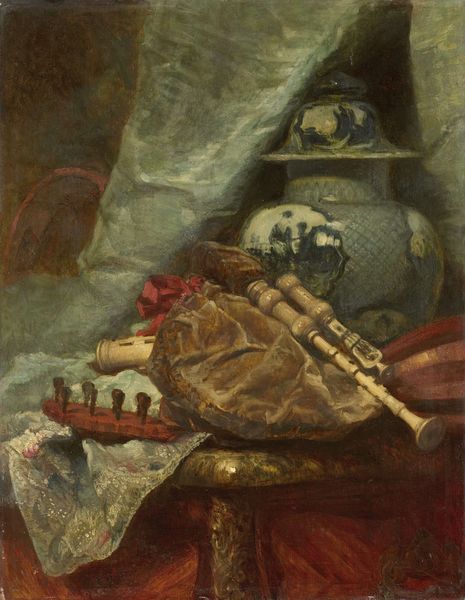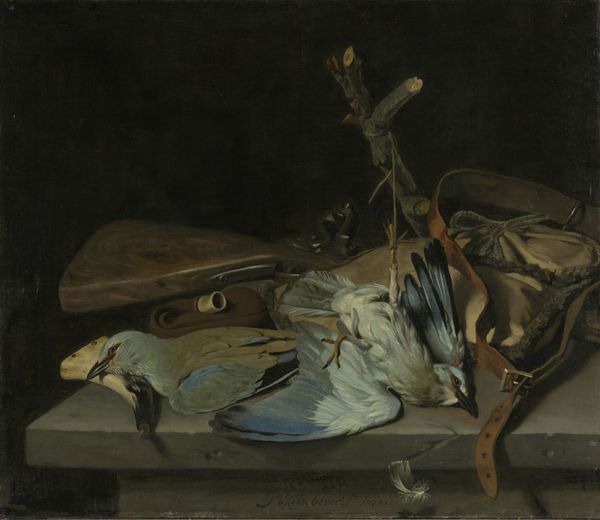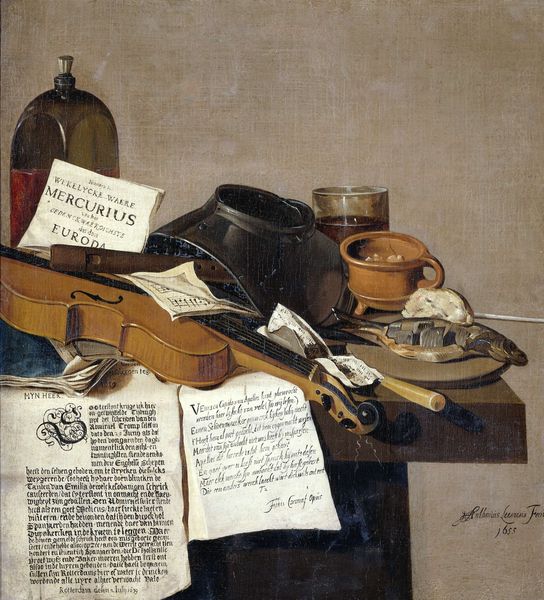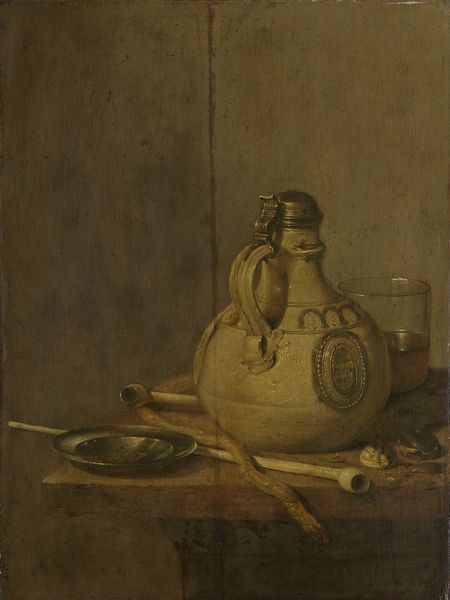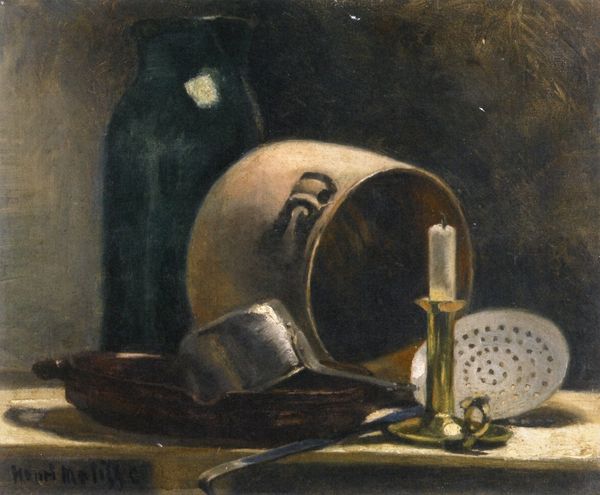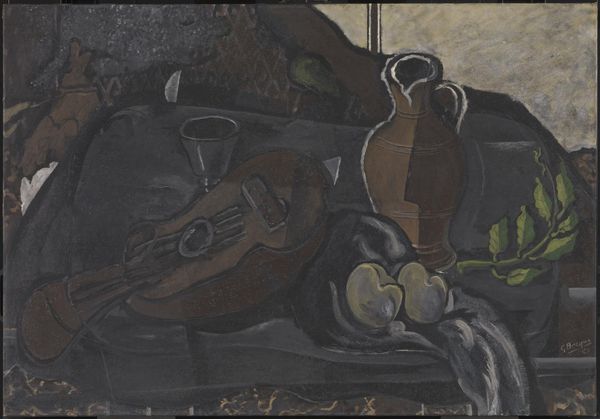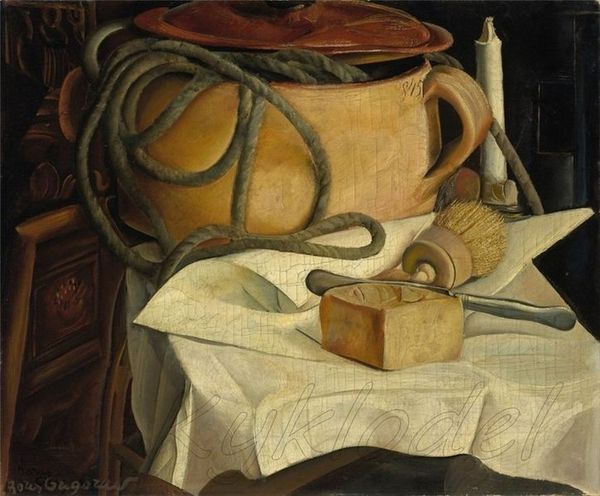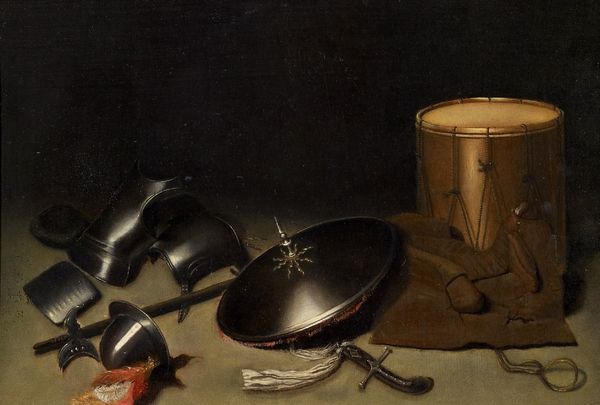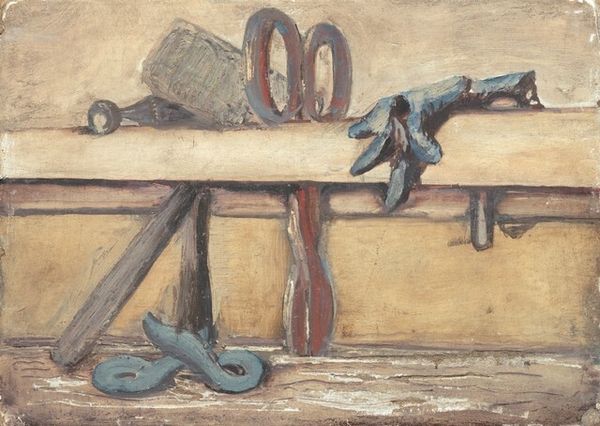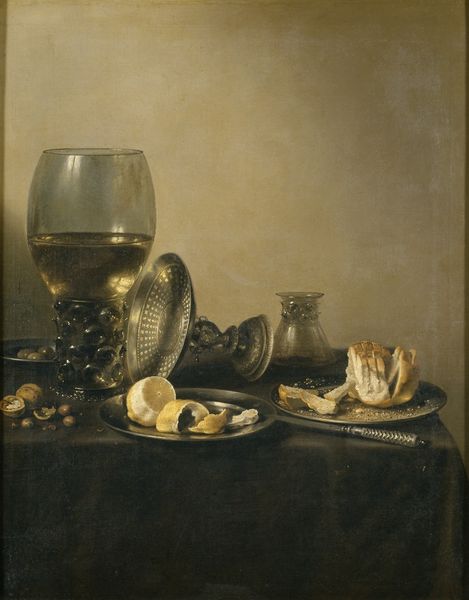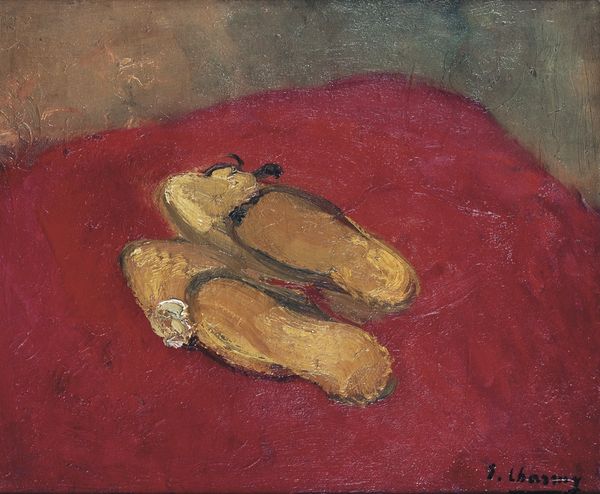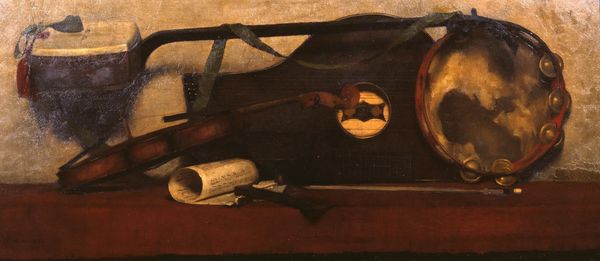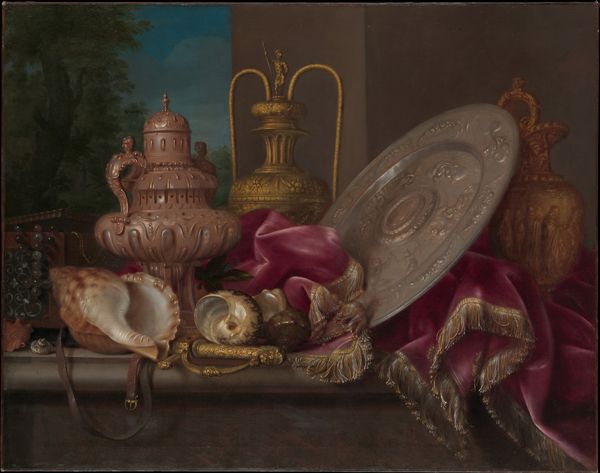
Dimensions: height 35.6 cm, width 43.5 cm, thickness 2.7 cm, depth 10 cm
Copyright: Rijks Museum: Open Domain
Curator: The melancholic light immediately grabs me. The subdued palette gives this still life an almost somber quality. Editor: Indeed. Let's delve into August Allebé's "Still Life with Oriental Slippers," created in 1873. Notice how the artist employs oil paint to meticulously depict these disparate objects arranged on a simple draped table. Curator: It's the arrangement itself that sparks questions for me. Are these haphazardly placed remnants, or deliberately positioned items suggesting a narrative? The texture of the slippers is fantastic! And how much they say about class, trade, and access. Editor: Consider the context of the late 19th century. The Oriental slippers, alongside what seems to be a string of beads and a pipe, evoke themes of exoticism and trade— commodities increasingly accessible to the European middle class, speaking to ideas of imperialism. These objects aren't merely decorative; they reflect social power dynamics and consumption patterns of the time. Curator: The artist's process definitely heightens the slippers to become symbols. The close-up perspective, the subdued yet dramatic lighting, elevates the materials to become emblems of a globalized economy. The craftsmanship inherent in those slippers, though, suggests a slow, skilled production at odds with its ready consumption. Editor: Precisely. And it's not just about economic exchange; it also reveals how othered cultures become aestheticized, even fetishized. Note how the soft slipper leather and carefully applied ornamentation contrast against the somewhat crudely rendered table, underscoring disparities in labor and cultural value. It provokes conversations around authenticity, appropriation, and power. Curator: This romantic lens provides an intriguing starting point into exploring these topics within a still life, an otherwise traditional and confined artistic space. It challenges our conventional understanding. Editor: It encourages us to look critically not just at the objects represented but the social structure enabling their display and enjoyment. Let’s continue to deconstruct this narrative surrounding colonialism and trade as our time comes to a close here today.
Comments
No comments
Be the first to comment and join the conversation on the ultimate creative platform.
